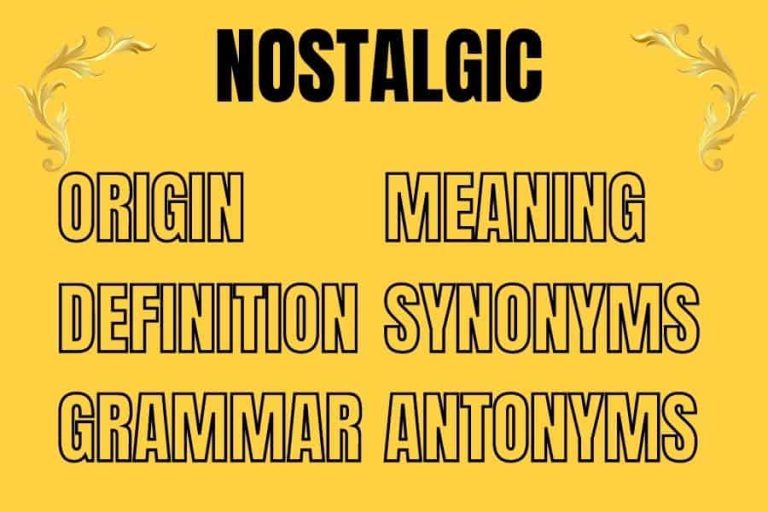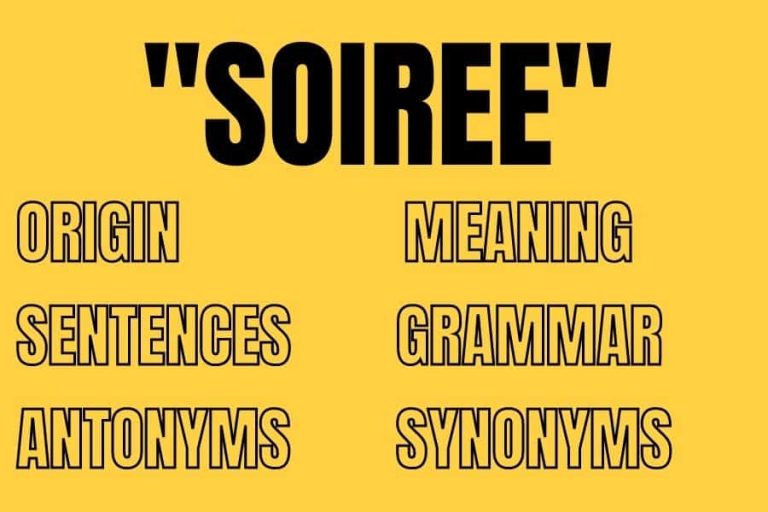By the end of this article, you will get answers to your questions like — Is it better to translate the English to Spanish or Spanish to English?; Is it easier to learn English from Spanish or Spanish from English?; Is English to Spanish Google Translate accurate?; What is the most accurate Spanish translator?; Why is it hard to translate Spanish to English? and many more.
Translating from English into Spanish is strenuous enough. Translating from Spanish into English is even trickier, as there are more words that have multiple meanings.
![What is Better — Translating English to Spanish or Spanish to English? [Analysis] 1 What is Better — Translating English to Spanish or Spanish to English](https://moneymintz.com/wp-content/uploads/2021/10/Translating-English-to-Spanish-or-Spanish-to-English.jpg)
The most common way of translating from one language to another involves comparing source and target texts word by word, and adjusting through equivalent synonyms and phrasal and grammatical structures.
When translating from English into Spanish, one has to consider the differences between Spanish and English: for example, some words do not have direct equivalents in the other language; some languages use different prepositions or conjunctions to link elements together; and some languages simply don’t have specific words for certain things.
For example, the Spanish word “estrés” has no direct English equivalent; it can either mean “stress” or “strain” depending on its context. This is why one should always consult a professional translator when translating texts between languages. Different ways of saying the same thing in different languages can cause serious ambiguity, and can lead to wrong interpretations.
The same goes for Spanish-to-English translation.
The Spanish language is known for its laconic quality, which makes it somewhat difficult to translate into English, since the latter has more words that express the former’s meaning.
Moreover, there are some phrases in Spanish that do not have a direct equivalent in English, and have to be translated via other expressions.
In the case of Spanish-to-English translation, one should also consider certain idioms and common figures of speech that do not exist in the latter language.
For example, the idiom “tener prisa” does not mean “to have urgency” or “to be in a hurry”, but rather “to be impatient.” Thus, if one were to translate this phrase literally into English, it would not convey the same meaning as intended by its original statement.
After all the hard work that goes into it, translating an English document to Spanish or vice versa can be a very tedious process. You have to get the right equipment and the right software. Then of course there is cost involved with either of the choices.
So which choice makes more sense? Should you translate from the English to Spanish or Spanish to English?
Many people get caught up in this dilemma. You get the same response from either side of the issue, “translators are expensive”. Some think of it as simply flipping a coin while others take their time to figure out which choice will be more beneficial.
Is it better to translate the English to Spanish or Spanish to English?
Well, there are many factors to consider.
First of all, if you are planning on getting your document translated, make sure it involves business or legal terms that are specific to one language or the other.
If the contract has every detail laid out in very clear English, then go ahead and translate it into Spanish for marketing reasons but if there is not enough documentation to back up the terms and conditions of the contract, then you should leave it in English.
Also consider this; If your business takes place in America where English is spoken, but you are making an effort to translate into Spanish because your target audience is Mexican, then that could be a strategic move!
Finally, take into account what equipment you have, what software you can get and what your time constraints are.
Read: 17 Greatest English Novels of All Time
Ambiguity in Languages (English and Spanish)
Neither English nor Spanish is superior in terms of ambiguity. Both languages have their own specialties and limitations, strengths and weaknesses.
Ambiguity in the English language is defined as having multiple meanings or various interpretations due to either homonyms or words that sound alike. For example, the word “bear” can mean an “animal” or “to carry”. Therefore, the sentence “He was bare” can mean he had no clothes on or that he was carrying something.
Although there are many words in Spanish that sound like English words, the meanings of these words are different. This means that when translating from one language to another, it is best to show multiple translations for an ambiguous word within the text.
For example, if “Where is this bear?” (Dónde está este oso? ) was being translated from English to Spanish, it would be best to have multiple translations for the word “bear” within the text. This way, it is possible to know if this means an animal or if someone is carrying something.
Another common example of ambiguity in the English language are homonyms, words that sound alike but have different meanings. An example of this would be spelling “here” as “hear”. This can cause confusion when translating to Spanish, if it is not made clear which word has been used within the sentence.
In Spanish, this is also a factor that must be taken into consideration when translating from English to Spanish. Homonyms in English can easily be identified, as they are not words that exist in the Spanish language. Therefore, it is easy to know which word to choose for the sentence and avoid any ambiguity within the text.
Characteristics of the Spanish and English Languages
What is Preferable–Translating Spanish to English or Vice Versa?
It is preferable that the Spanish text, in general, will be translated into English and not vice versa. Many people believe that it is necessary to translate from Spanish into English because this language has a larger number of native speakers; however, the opposite is true: there are more users who speak and write in English than in Spanish, and it is more likely that the perfect translation will be found on the English text.
For this, we must consider some characteristics of both the languages:
- The English language, as a universal language throughout the world, has many synonyms of vocabulary and concepts that do not exist in other languages such as Spanish. For example: there is no translation in Spanish for the word “fisherman” (English), which can be translated into French or German, however it does exist in English. This is why many times the translation is not equivalent and it does not express the same idea with equal clarity.
- The vocabulary of Spanish languages, especially in Latin America, uses different terms for the same concept, which can lead to confusion when translating the text. Languages like English do not present this problem because they use vocabulary that is shared throughout the world.
- The grammar of both languages is different; although they use foregone rules, in general terms it is said that English is more regular than Spanish. This means that more effort is required when learning the language.
- The literal translation of English to Spanish is not possible, which means that it is necessary to have a deep knowledge of both languages and how they work.
- On the other hand, in English there are no gender distinctions, or masculine and feminine words used as nouns or adjectives. In Spanish, it is necessary to be able to use the appropriate word in both cases, which may complicate translation a little more when using a language without these distinctions.
- The English language has a greater tendency to abbreviate and extract words, which may slow down the reading of a text from this language if this process is not done correctly.
- The English language is more flexible than Spanish; it can be used to tell stories, communicate ideas and concepts, make arguments, etc., while the Spanish language has a narrower range of uses.
Read: Best Books for English Teachers and Students
Why it is better to translate from the Spanish into English?
On the other hand, there are some reasons for why it is better to translate from Spanish into English:
- The vocabulary of both languages does not have equivalents, which means that there are words, concepts or phrases that need to be translated from the English text.
- Spanish is more widely spoken than English in Latin America because it has a larger number of speakers. There are many people who speak only Spanish, and for this reason having an appropriate translation will facilitate communication with them.
- The Spanish language is shared by many Latin Americans, and it will be much easier to find the perfect equivalent in this language than in English. Although both languages are spoken in the United States, there are more users who speak and write in English throughout the world.
- Latin Americans tend to use a mixture of both languages when communicating, which means that it will be necessary to translate complete phrases or texts, not just single words.
- Another difference is the writing system; in English the number of letters in words varies according to their position within a sentence, unlike Spanish where they have almost the same sound regardless of whether they are written at the beginning, middle or end of a word.
- It is more likely that the user will find an equivalent word in Spanish than English, which means that if they are looking for a specific concept it should be easier to translate from Spanish into English.
A good legal translator must have an extensive knowledge of terms used in both the languages and also know how they are applied.
This means that the translator must have a deep knowledge of English and Spanish if they want to achieve accurate translations that do not cause any misunderstandings or confusion in the final text.
Important Tips for Translating the English to Spanish and Vice Versa
Tips for Translating the English to Spanish:
- Use word for word translation. This will provide a more natural feeling and will convey the same message as the original text whereas, if you use phrases or sentences, it may result in a not proper translated text because of different grammatical structures. Word-to-word translation is very accurate, but sometimes it doesn’t make sense;
- When translating from English to Spanish, you should use some words that are more Latin because they are widely used in all Latin American countries. For example; “el examen” instead of “examen”, which means that the former is a little less formal;
- Try to focus on word order and punctuation if it’s necessary;
- Pay attention to singular and plural forms of nouns, verbs and adjectives. As a general rule, you should use the singular form in Spanish if it has a single subject and the plural one if it refers to a group of persons or things;
- Use an English – Spanish dictionary as well as a Merriam-Webster’s Spanish Thesaurus, a Diccionario de la Real Academia Española and a Gramática Inglesa by Geoffrey Leech. All these will help you to master Spanish language;
- Bear in mind that direct translation doesn’t always make sense. You must be creative!
![What is Better — Translating English to Spanish or Spanish to English? [Analysis] 3 Tips for Translating the Spanish to English](https://moneymintz.com/wp-content/uploads/2021/10/tips-for-translators-576x1024.jpg)
Tips for Translating the Spanish to English:
- You can use the same translation techniques as previously mentioned;
- Pay attention to Spanish prepositions like “de”, “en” and others. They make a difference when translating sentences;
- Never forget to highlight the different tenses! They are very important;
- For Latin Americans, it may be difficult for them to distinguish between American English and British English. You should be careful with your target audience or region;
- When you are translating from Spanish to English, try not to use very formal words because people who speak this language usually prefer informal ones.
For both translation languages, Spanish and English, it’s important to take into consideration the following aspects:
- The text should be formal or informal according to the needs of your target audience;
- If you are translating, for example, from Spanish into English, you can use Latin words to keep a similar feeling between both languages. Bear in mind that it depends on the region where your clients are located;
- Be careful with prepositions! You should use the correct one depending on whether you are translating from Spanish into English or vice versa;
- It’s better to avoid idioms or phrasal verbs when doing translations because they may change their meaning in the translated text which can be very confusing for your clients;
- Try to avoid word order changes and such things because it might change the general meaning of the message;
- It’s important to use correct punctuation and capitalization. When translating from Spanish into English, don’t forget to highlight all verb tenses;
- Be creative when solving translation problems!
Read: 13 Best Books on Farm Animals for Kids to Make Them an Avid Reader
Avoid Literal Translation of the English to Spanish
We are here going to cover some examples to show why literal translation of English to Spanish is not always effective.
When translating languages, it is common to opt for the shortest or quickest way, but often this works against you. A literal translation of the English will not be as effective in Spanish, as rewording certain phrases and concepts can improve expressiveness.
Examples:
English: The customer made a complaint about our services.
Spanish (literal translation): El cliente hizo una queja sobre nuestros servicios.
English: The customer complained about our services.
Spanish (reworded): El cliente protestó contra nuestros servicios.
The Spanish version is more direct and informal than the original, which can be seen as an improvement. This is not always possible, but it is worth considering.
Here are examples of how changing word order can improve Spanish fluency.
Examples:
Spanish Sentence 1: El jefe llegó tarde a la reunión
English: The boss arrived late to the meeting.
Spanish Sentence 2: La reunión terminó antes de que el jefe llegara.
English: The meeting ended before the boss arrived.
By changing the word order, it is easier to express what happened first in Spanish sentence two.
Examples:
Todo lo que debes saber para hablar inglés bien.
All you need to know to speak English well.
Todo lo que debes saber para hablar bien inglés.
All you need to know to speak good English.
All that you have to know in order to speak English well.
Todo lo que debes saber para hablar bien inglés.
All that you have to know in order to speak good English.
Todo lo que debes saber para hablar bien inglés.
Pros and Cons for Professional Translators
![What is Better — Translating English to Spanish or Spanish to English? [Analysis] 4 What is Better — Translating English to Spanish or Spanish to English? [Analysis]](https://moneymintz.com/wp-content/uploads/2021/10/translators-576x1024.jpg)
Pros and Cons for a Professional Translating the English to Spanish:
Pros:
- You make a highly qualified translation since you are fluent in both languages. Professionals, government agencies and many other institutions will be willing to hire you for this type of translations. In addition, as a freelancer or online worker who possesses that kind of skills your income potential is going to increase dramatically.
- You achieve greater international recognition. Since you are able to write in both languages, this gives you the opportunity to interact with people from any part of the world (which is usually restricted to native English speakers).
- You might be able to increase your knowledge of the Spanish culture. These types of translations give many opportunities for language learners like yourself because you can read in English about topics in Spanish history, politics, society etc.
Cons:
- The financial reward is much smaller than translating the Spanish to English. Perhaps your clients will not be able to appreciate your linguistic skills enough because Spaniards are usually considered lazy when it comes to learning another language (especially Americans who believe that they speak “English”). In addition, most Spanish residents in the US speak English.
- You might have difficulties finding a steady flow of work if you live in a country where there is a shortage of professional translators (as it happened to me when I was living in Mexico). In contrast, perhaps your local market is saturated with online workers who are willing to translate from English to Spanish as a side activity (if so, avoid competing with them).
- You might find yourself overwhelmed because there is too much information in English. In fact, you should not let this situation affect your health and personal life.
Pros and Cons for a Professional Translating the Spanish to English:
Pros:
- The language used in most countries is Spanish so it will not be difficult for you to find work (you can imagine how many companies would like to translate their content into Spanish).
- You can help people with cultural differences (for example, most companies that sell products in the USA are American and they might not be aware of some habits or traditions).
- You will feel more comfortable than when translating from Spanish to English because you know two languages. In other words, this means that you will avoid making mistakes when you write or speak in English.
- You will find less difficulty than if you translated the Spanish to English because of the cultural differences.
Cons:
- It is more difficult for beginners who do not have many years of experience in this type of work to find relevant jobs that pay well. However, things usually change if you have a decent number of years in the industry.
- Most companies will ask you to start at a beginner’s level (after all, most translators who translate from English to Spanish are native speakers). Therefore, it is very important that you pay attention to grammar, sentence structure and other aspects that ensure good writing skills.
- You might not be able to produce quality content if you do not master the translation software.
- It will be difficult for you to find relevant content that is worth translating if you do not keep up with the latest news about what is being said or written about certain topics.
- You might not feel very comfortable working for American companies since they tend to work with other Americans even when they need to translate their content into Spanish.
- You will always need to improve your skills as a translator and it will probably take many years before you feel 100% comfortable with this type of work.
- It is difficult for beginners who do not have many years of experience in this type of work to find decent jobs. However, things usually change if you have a decent number of years in the industry and if people know they can trust you.
Benefits and Disadvantages of Translating the English to Spanish and Vice-Versa
Translating the English to Spanish
- Advantages are that it is far easier to understand both language in comparison to translating from Spanish to English. However, when you are translating the English into Spanish, all of your grammar rules will be similar for both languages. If not, then you might have some difficulties when trying to translate everything into Spanish.
- Disadvantages are that if you translate from English into Spanish, there might be some phrases that either do not make sense to a Mexican or it would take too much time to explain why something sounds funny to them. Also, sometimes the words have different meanings in each language and could cause confusion as well.
Translating the Spanish to English
- Advantages are that if you translate from Spanish to English, it will be much easier to understand the context of what you are saying. Most words in both languages have similar meanings and do not sound confusing when translated into another language. However, you must also keep in mind that there are different words for things in some cases.
- Disadvantages are that you may not understand all the expressions and slang words that people use when speaking Spanish. There might be other phrases or words that do not make sense to an English speaker either. Also, if you translate from Spanish to English, it could take more time than translating from English to Spanish.
Translation Tricks You Should Keep in Mind When Translating from the Spanish to English
Sometimes, when you translate to another language, the turns of phrases in your own language sound way better than what is available in target languages.
However, it may be ideal to translate word-for-word instead of trying to force an English phrase into Spanish or vice versa. You may end up conveying incorrect meaning or tone, which may not be what you intend for at all.
Translation is a tricky thing, but today we are going to give you some tricks that can help you when learning how to translate in your language pair. Luckily, there are some easy solutions out there to help you with your struggles in translating certain phrases! Let us explain…
When you translate from English to Spanish, you may come across a phrase in English that is difficult to find a direct translation for.
In this case, it is best to figure out the meaning of the word or words and use your understanding of context clues along with your knowledge of verbs, nouns, articles, prepositions, etc.
Spanish learners may be familiar with the word “embarazada,” which means “pregnant” in English. But, did you know that it can also translate to “embarrassed”? Knowing this meaning of the word will help you when translating from Spanish to English.
In certain cases, context clues can determine what prepositions or articles should be included in certain phrases, depending on the context of the phrase.
For example: “Tengo una pregunta” and “Tengo una duda.” Both of these phrases mean, “I have a question,” but they are not interchangeable! When you say “Tengo una pregunta” it means you want to ask a question, but “Tengo una duda” means you have doubts or uncertainties about something.
When translating from Spanish to English, it is also important to decide which prepositions should be used in certain phrases. For example: “Estoy en la escuela.” This phrase would translate to, “I am in the school,” but if you said, “Estoy en la escuela” it would mean something completely different! It would translate to, “I’m by the school.”
The word “en” is used for time expressions and location. The word “by” is only used for location.
Therefore, keep this in mind when translating from Spanish to English!
You can visit Collins Dictionary to translate from the Spanish to English and vice versa for free.
Is the Spanish Translation on Google Translate Accurate?
A common issue people run into is that due to the differences in region, the translations of words are not very effective.
For example, you may see Spanish translate (traducción español) on Google Translate and see English (Traduccion ingles) below it. Although they are both listed as “Spanish translation,” they are actually two different translations.
Even if it is the exact same word, you will notice that there are two different options because each language has a separate dictionary.
This is why Google Translate provides an estimate using statistics and patterns in order to predict the most accurate translation.
However, since the dictionaries of the different languages are all done by humans, there is a chance that the translation may not be perfect. Therefore, we recommend that you check the translated text before using it to help avoid any mishaps or regrets.
Because of this reason, we suggest that if you are translating from Spanish to English, go with English (Traduccion ingles) and vice versa. In some cases, the translation from Spanish to English may actually be better than vice versa.
What is the best English to Spanish translation app?
There are many English to Spanish translation apps in the market. Here, we are going to cover some of the popular ones.
Free English to Spanish Translation Apps
You have several options when it comes to free English to Spanish translation apps. A couple of the most popular are Google Translate and Bing Translator.
Google Translate is an app that uses your phone’s camera or image recognition software to scan words on a page, then translates them into another language after a quick internet search.
This app is very accurate, and it allows you to get the translation in the same approximate field of vision as the original text, which can be easier than trying to read a small screen for extended periods.
We also have Google Translate offline mode- this is another excellent feature of Google Translate. When you download a language pack for offline use, you’ll be able to use the app without an internet connection!
Up next, we have Bing Translator. This app works in much the same way that Google Translate does- scan the text with your phone’s camera or select the text in question, then tap Translate. Bing Translator isn’t quite as accurate as Google, but it’s still pretty good at what it does.
Paid English to Spanish Translation Apps
If you’re looking for a higher-quality English to Spanish translation app that will ensure accuracy every time, then you should consider buying one of the following apps:
Word Lens (iOS/Android): This app was developed by Quest Visual, and it does an excellent job of translating words on the screen. It’s especially useful for translation in real-time translation situations- reading signs, menus, etc.
InSight (iOS only): This app was developed by Diction Software, and it offers real time, voice to voice translation. Pronunciation is one of its strong points- you can tap on words or phrases that don’t sound correct, and it will repeat them in the correct way.
Translate (iOS only): This app will not do real-time translation like InSight, but it does offer a whole lot more. You can type or speak into your phone and the app will produce both written and audio language translations with ease. This is an amazingly detailed app that is totally worth the money.
The Best Option — Free or Paid?
So, which English to Spanish translation app is the best choice- free or paid? Generally speaking, you get what you pay for. The free options are great for some situations, but if you’re planning on using your app frequently, then it might be worth the extra money to buy one of the apps that offers offline capabilities.
FAQ
Conclusion
For people who need their documents translated, it is advised to use professional translators when they are translating from Spanish into English because it is more difficult to convey certain phrases using an equivalent translation.
Additionally, if someone needs documents translated from Spanish to English, they should also use professional translators because there are many idioms that do not exist in English.
Thus, if one were to translate these phrases or expressions literally into English, it would not convey the same meaning as intended by its original statement. This article titled – What is Better — Translating English to Spanish or Spanish to English?, is written for professionals who need help translating between two languages.
Recent Articles:
- Master Self-Discipline: Transform Your Life in 2025 with These Essential Strategies!
- Ebook Design for Children’s Books: Capturing Young Minds Visually
- Expanding on the Value of Professional Fashion Design Services
- Get Custom African American Character Illustrations with Any Hairstyle
- Transform Your Look with Rasaline’s Expert Hairstyle and Fashion Advice






